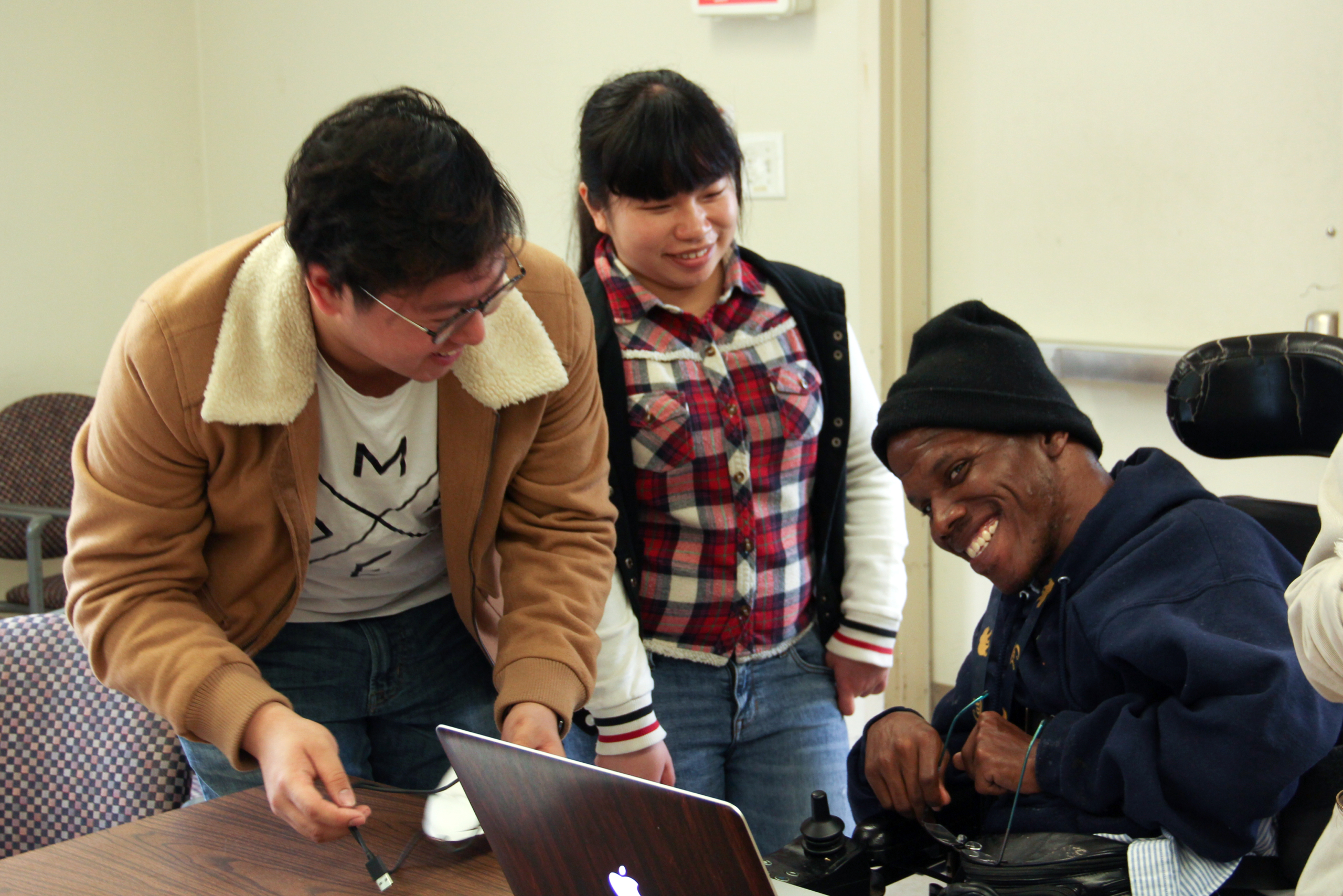The students in Wearable and Soft Interactions taught at California College of the Arts have several assignments throughout the semester. The main assignment is one that gives the students real-life users to collaborate with and design for.
Before the start of the semester I reached out to several organizations that worked with people with cerebral palsy. Taken from cerebralpalsy.com:
“Cerebral Palsy is considered a neurological disorder caused by a non-progressive brain injury or malformation that occurs while the child’s brain is under development. Cerebral Palsy primarily affects body movement and muscle coordination. Though Cerebral Palsy can be defined, having Cerebral Palsy does not define the person that has the condition.”
The goal was to have the students meet and collaborate with people who needed creative solutions for interfaces that are not available to them. The focus being on soft, flexible and wearable interfaces. I received an enthusiastic reply from Maureen DeCoste from Ability Now Bay Area, a center that provides education, health and wellness, computer skills and more to people with disabilities. After meeting with Maureen, she had a good understanding of what my students would be capable of and I had a better understanding of how Ability Now worked and the diverse range of capabilities that could be found amongst the folk that came to the facility. As suggested by Maureen, she asked participants that she felt would benefit from the collaboration to attend a type of focus group I would lead. I came back and presented to the group what wearable and soft interfaces were, some examples of past interface designs, what the class scope was and generally what the format would be if they were interested in working with my future students. More importantly, I met each potential collaborator and heard from them about what they would like to have built for them.
Eventually 4 total participants were confirmed to work with the class!
Kevin Siemens – Kevin requested a TV remote controller that he could use. He had a hard time holding traditional remotes. His controller would have large soft buttons and be made to be accessed while he was on the floor, which is where students learned he used it from interviews and visits.
Emile Perry – Emile likes working in the computer lab but has a hard time grasping a keeping hold of traditional mouse. Students studied his hand placement extensively and lead to a custom mouse with a soft conforming pad properly deemed “Emile’s Mouse”.
José Yapching – José is completely non-verbal in the way that he is not able to physically speak. Students worked with him to prototype different soft and wearable interfaces that incorporated different soft buttons and sensors that triggered chosen words.
Atakilti Haileselassic – Atakilti also can use another solution to help him “speak”. Students worked with him arm movement to trigger sound chosen by him.
Students split up into teams of 2 and 3 and worked with one of the 4 participants. They each prototyped and tested their creations ending with a final presentation and final test at Ability Now Bay Area.
On the class website, you can read the design brief and see documentation of the design process and final presentations.
